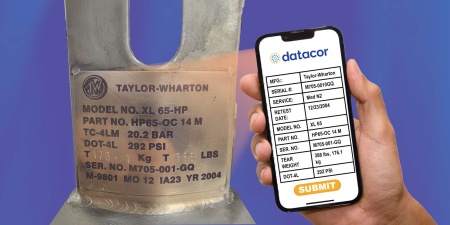In response to the ongoing impacts of the COVID-19 pandemic, the Compressed Gas Association (CGA) continues to shift how we operate. We are committed to meeting our members where they are in this moment – whether they’re working from home, in the office, on the road, or on the manufacturing floor. As we move into 2021, we will continue to focus on providing industry leadership in support of our safety mission, while adopting new ways to effectively get our work done and best serve our members, our valued partners including GAWDA, and the compressed gas industry as a whole.
The Fight Against COVID-19 Continues
We at CGA continue to take action, coordinating with our members as well as government agencies in the U.S. and Canada, and sharing new resources to aid in our industry’s ongoing response to COVID-19. We remain committed to working with all members of the industry to aid in efforts to serve the needs of customers, while striving to keep employees, vendors, end users, and all others across our supply chains, safe.
Dry Ice Supply for COVID-19 Vaccines
Some COVID-19 vaccines require storage and transportation at extremely low temperatures. Dry ice (solid carbon dioxide) is needed to reach and maintain those temperatures.
The majority of carbon dioxide (CO2) and dry ice in the U.S. and Canada is produced by member companies of the Compressed Gas Association (CGA).
According to CGA members, the current production capacity for carbon dioxide and dry ice is expected to be sufficient to meet anticipated demand from vaccine manufacturers. There is also potential capacity to increase production and distribution of dry ice for COVID-19 vaccines, if needed. Our industry is committed to supporting the need for dry ice in the U.S. and Canada, due to the COVID-19 pandemic.
To help spread the word about dry ice availability for COVID-19 vaccines, CGA published the article, Compressed Gas Industry Expects Sufficient Dry Ice Supply for COVID-19 Vaccines in U.S. & Canada, and the related Dry Ice Fact Sheet in November 2020. We have since fielded extensive media inquiries about this issue.
CGA will work closely with our members to monitor this developing situation, and may publish additional resources as more information about demand and supply of dry ice for COVID-19 vaccines becomes available.
We Continue to Update Our Online COVID-19 Industry Toolkit
The industry toolkit we launched in Spring 2020 to aid in the industry’s COVID-19 response, continues to be updated (see https://bit.ly/CGACOVID-19Toolkit). In this toolkit, we provide news, resources, links, and other critical information related to COVID-19, to assist all members of the industrial, medical, and food gases industry in your response efforts during the pandemic.
In the toolkit, we publish content focused on U.S. and Canada government news and resources at the federal, state/province, and local levels, as well as CGA news and resources. We will continue updating the toolkit in the coming months, as critical information becomes available.
One key resource remains available to all, free of charge: CGA P-83, Guidelines for Cleaning Externally Contaminated Medical Gas Containers.
As healthcare providers around the world continue working to assist patients affected by the Coronavirus Disease 2019 (COVID-19), medical gas containers can become externally contaminated due to their use in healthcare facilities. It is important that these cylinders are cleaned in a manner that removes contaminants, does not cause damage to the cylinder, valve, or gas product, and does not lead to a hazardous situation during the use of the container’s contents. It is the customer’s responsibility to return to the gas supplier medical gas containers that are free from contamination.
CGA P-83, Guidelines for Cleaning Externally Contaminated Medical Gas Containers, provides guidance on considerations required to avoid compromising medical gas containers during cleaning and disinfection procedures. In order to facilitate safe cleaning of medical gas containers, CGA is providing P-83 at no charge during the COVID-19 pandemic (all CGA Safety Alerts are also available for free).
To make CGA P-83 more readily available for all, we have published it directly to our public website, where it can be easily downloaded (see https://bit.ly/CGAP-83Info).
We also provide this related safety alert:
CGA SA-35, Safety Alert, Cleaning of Cylinders Returned from Healthcare Facilities During a Pandemic
We’ve Expanded Our Educational Resources
We’re Developing an Extensive Line of Safety Posters
In order to provide new industry employees and end users with the information they need to safely interact with our members’ products, we continue to expand our series of free safety posters and related product information.
In 2020, we published new end user safety posters and related online safety information on the topics of home oxygen safety; safe use of liquid nitrogen in food and beverage service environments; safe handling of dry ice; and the medical oxygen supply chain. In December, we began work on a new series of communications tools on the safe use of compressed gases in the cannabis industry, as well as a new poster on precautions for liquid nitrogen use in cryogenic therapies. In 2021, we will continue expanding this library of safety resources for end users on additional topics.
CGA also offers an expanding set of industrial safety posters aimed at explaining basic safety concepts to anyone new to handling compressed gases and related equipment.
Each poster is provided as a scalable PDF file, enabling users to print the size they need. The posters are also designed for easy co-branding: GAWDA members can add your company information to the “supplied by” box at the bottom of each poster, then share this valuable training resource with your customers.
We encourage all GAWDA members to take advantage of these invaluable free resources, to help ensure that all those who come in contact with our industry’s products, may do so safely.
For more information and to download these safety posters, see: https://www.cganet.com/resources/safety-posters/.
We’ve Added More Titles to Our eLearning Library
Our eLearning library also continues to grow. In August 2020, we published 2 new training modules:
- CGA TM-7, eLearning: Introduction to Compressed Gas Cylinder Valves
- CGA TM-8, eLearning: Oxygen Safety
These training modules joined 6 existing titles in the CGA eLearning library:
- CGA TM-1, eLearning: Safe Handling and Storage of Compressed Gases
- CGA TM-2, eLearning: Safe Handling of Acetylene Cylinders
- CGA TM-3, eLearning: Safe Handling of Cryogenic Liquids in Portable Containers
- CGA TM-4, eLearning: Filling of Uninsulated Carbon Dioxide Cylinders
- CGA TM-5, eLearning: Filling of High Pressure Medical Oxygen Cylinders
- CGA TM-6, eLearning: Filling of High Pressure Industrial Gas Cylinders
Each of these innovative training modules is designed to provide a helpful resource for employees who may need more coaching in how to safely handle and work with compressed gases. We will continue adding new titles to this library in 2021.
As a reminder, these training modules are included as a benefit in the CGA-GAWDA partnership. Participating GAWDA members gain free access to this eLearning library for their employees.
Serving Our Industry’s Meeting Needs – Virtually
By mid-2020, in response to the challenges and risks of the COVID-19 pandemic, we transitioned all CGA meetings, seminars, and other historically face-to-face events to an online format. In early July, we launched CGAConnect 2020 – offering a full slate of online webinars, meetings, and seminars through the end of the year.
From mid-August through late September, we partnered with GAWDA to co-host the innovative 2020 Young and Emerging Professionals Summit – a series of 10 online events that drew record-breaking numbers of industry participants from around the globe. We also transitioned the long-running CGA Safety & Reliability of Industrial Gases, Equipment, and Facilities Seminar into a highly successful online event that drew almost twice as many participants as its equivalent in-person seminar in 2019.
CGA staff are developing another full calendar of virtual events for CGAConnect 2021, which will continue to offer technical and professional development content in a virtual format. These events will again focus on advancing participants’ technical knowledge, while fostering cross-industry collaboration and networking.
Making Progress on the New Online Handbook of Compressed Gases
In order to best serve industry members’ needs in as flexible and responsive a manner as possible, CGA continues in our effort to transition the CGA Handbook of Compressed Gases from a traditional textbook to an interactive online tool.
The Handbook includes 13 chapters on topics such as gas safety, regulations, valves, cylinders, containers, bulk shipments, and delivery system equipment as well as monographs for more than 60 gases. Each monograph includes chemical information, physical constants, vapor pressure curve, description, uses, physiological effects, methods of shipment, containers, and other important information on compressed gases.
Through late 2020 and early 2021, CGA members will continue working in focus groups to define the features and content for the newly re-envisioned online Handbook tool. Their primary mission is to identify critical functionality and characteristics for an online tool. Specific updates to text content for Handbook chapters and gas monographs will be developed at a later stage of the project.
Our Essential Work in Safety Publications Development Continues
The essential work of our committees remains strong. Safety standards development continues at a pace on par with previous years’ production – and CGA’s total library of safety publications has now grown to almost 360 titles. In 2020, we also submitted 10 new petitions to regulatory authorities in the U.S. and Canada to align regulatory requirements with industry best practices.
We’re Expanding Our Role in the Hydrogen Energy Revolution
In recent years, climate change and the growing need to decarbonize the global economy have increased the importance of hydrogen as it moves from primarily industrial uses to more consumer level applications. In response, CGA’s expanding our leadership role in hydrogen to focus not only on industrial uses, but also at the near-consumer level, including on hydrogen mobility.
CGA members are global leaders in the production, storage, distribution, and application of hydrogen and other industrial gases. And while we have an extensive library of hydrogen-related safety publications, we are bringing our unique expertise to the development of new standards for emerging applications in the hydrogen-powered transportation space to ensure our members are at the forefront of this energy revolution.
CGA will increase our thought leadership and technical expertise in transportation, particularly hydrogen fuel cell electric vehicles (FCEVs).
Senior level personnel from CGA member companies, together with CGA staff, are assessing existing hydrogen safety information and regulations, identifying gaps where current literature is inadequate to address hazards in the production, storage, transport, and use of hydrogen, or where regulations impede its expanding use – and implementing plans to fill those gaps.
We invite companies operating across the hydrogen supply chain – in the production, transport, storage, and use of hydrogen – to consider joining CGA. Come work alongside your industry colleagues, as we help write the future of the hydrogen revolution, while preserving the safety of our employees and communities.










